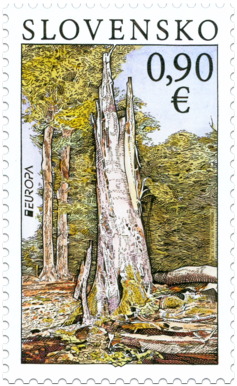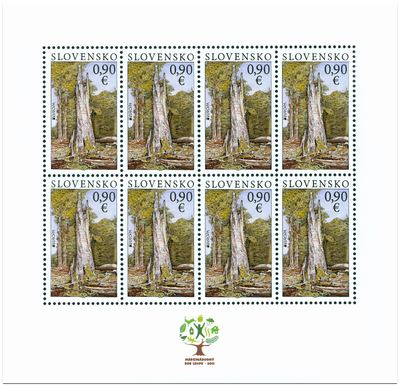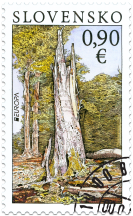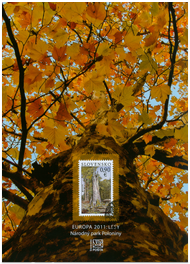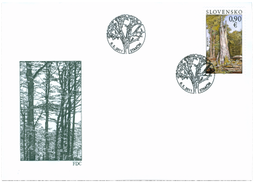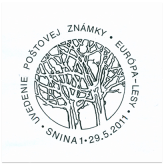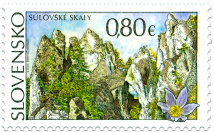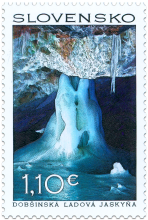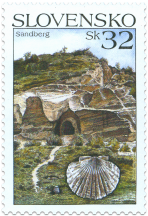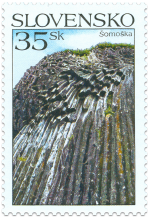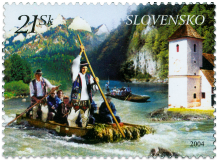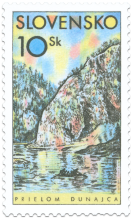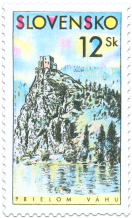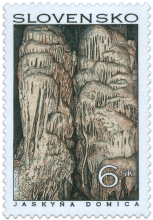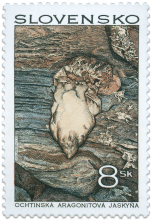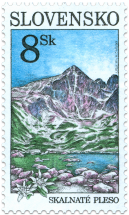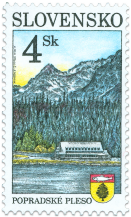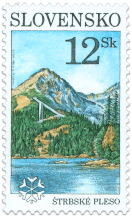497 Date of issue
06.05.2011 Face value
0.90 € Sell price
0.90 €
The National Park Poloniny is the eastern-most Slovak large protected area. It lies on the Slovak-Polish-Ukrainian border. The forests are dominant in the national park – they cover more than 90 % of the area. Those most precious ones are declared to be the national natural preserves or natural preserves to protect the old forest community. They are unique for human-impacted or only slightly impacted forests called primeval forests. It is a community where everything flows in an integrated circle. It represents the peak of natural ecosystems.
The primeval forest development has three stages. The circle of life starts at the stage of growth (forest younger than 150 years), and continues at the stage of optimum (forest of age 150 – 250) and declining of large trees with subsequent natural woods rejuvenation during the stage of decay (forest older than 250 years). The main wood species of the Carpathian forests is the European beech (Fagus silvatica). Together with white fir (Abies alba) they create precious beech and fir-beech communities. More than 40-meter high beeches are 200 to 250 years old. Slim, more than 50-meter high firs reach the age of 300 to 500 years.
The old forests are interesting for the amount of various precious and endangered plant and animal species. Typical is Dog´s Mercury, Henbane Bell, Dentaria Glandulosa, Tozzia Carpathica, Campanula Serrata, Tiger Lilly, Scilla Kladnii. Primeval forests are a suitable refuge of a wide variety of animals. In the wood of the lost beeches, the larvae of precious longicorns can be found – Rosalia Longicorn and Leptura (=Strangalia) Thoracica. Amphibians are represented by Yellow-Bellied Toad, Carpathian Newt, Fire Salamander. Of the reptiles typical is Aesculapian Snake, randomly also Common European Viper can be found.
The birds of feather include Black Woodpecker, White-backed Woodpecker, Red-breasted Flycatcher, Sage Grouse, Black Stork, Ural Owl and others. There is also deer and roe buck living, of the beasts there are Northern Lynx, Grey Wolf, European Wildcat and Brown Bear. The Carpathian beech forests were recorded into the list of World Natural Heritage in 2007. The cross-border world natural heritage consists of ten separate units located in Slovakia and in Ukraine. The most famous and the biggest primeval forest is Stužica – national natural preserve above the village of Nová Sedlica.
Iveta Buraľová
Similar products
593 Date of issue
18.09.2015
495 Date of issue
15.04.2011
373 Date of issue
21.04.2006
374 Date of issue
21.04.2006
333 Date of issue
03.09.2004
199 Date of issue
01.01.2000
200 Date of issue
01.01.2000
120 Date of issue
12.06.1997
121 Date of issue
12.06.1997
100 Date of issue
25.09.1996
99 Date of issue
25.09.1996
101 Date of issue
25.09.1996
© 2024 POFIS - Postal philatelic service. All rights reserved

